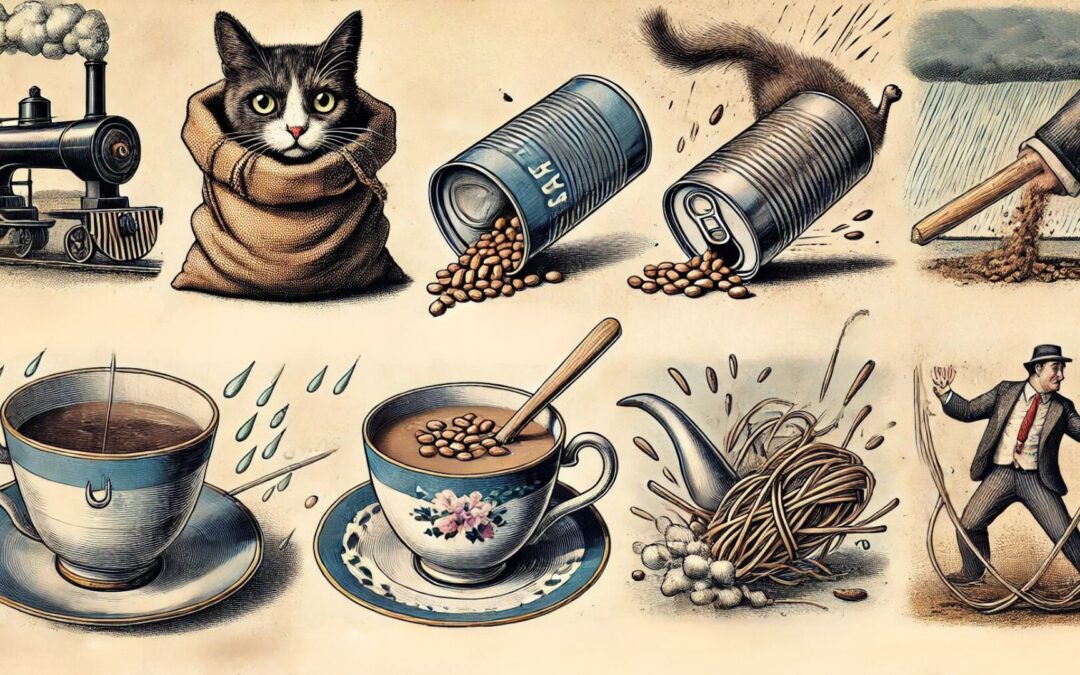Remember Mary’s little lamb? It followed her everywhere. Lambs follow their mothers. If a newborn lamb loses its mother, it will form a bond with a human being who adopts it. Just like Mary’s lamb, it will try to tag after its human parent. Lambs are baby sheep.
LIVING IN FLOCKS
Tame sheep are usually gentle animals. They like to live and feed together in flocks. When something frightens sheep, they run together for protection.
It’s easy for a shepherd and a sheepdog to control sheep. The sheep see the barking dog as a danger. The dog can get the sheep to move tightly together.
Sheep live on farms in almost all countries of the world. Australia and New Zealand are known for raising sheep. In the United States, most sheep ranches are in dry lands in the West.
PROVIDING WOOL AND FOOD
Sheep are mammals. Their bodies are covered with hair called wool. A sheep’s coat may be short and tangly. Or its coat may be long and either wavy, curly, or tightly coiled. Most sheep are white, tan, or gray. But some sheep are dark gray, brown, or black.
Sheep hair is extremely useful, unlike the hair of most other animals. Because sheep wool isn’t straight, it can be spun into long strands. One curved hair grips another curved hair to form the strand. (Straight hair doesn’t do that.) Strands of wool are then woven into woolen cloth or knit into woolen sweaters. We use sheep’s wool to make blankets and warm clothing. We also use it for weaving rugs.
Wool isn’t the only thing sheep provide us with. They provide milk for drinking and for making cheese. Their meat is eaten as mutton or lamb.
RAMS, EWES, AND LAMBS
Male sheep are called rams. Female sheep are called ewes. Sometimes rams fight each other, usually over ewes. When rams fight, they butt their heads together.
Most sheep have horns. The horns of a male sheep can be huge and curved. Female sheep have smaller horns. Sheep have long, narrow faces and pointed ears.
Ewes have as many as three lambs at a time. The lambs feed on the mother’s milk. Lambs like to play. When lambs are playing or excited, they sometimes leap into the air. Then they land on all four feet at once. This move is called pronking.
FEEDING AND CHEWING CUD
Sheep feed on grass and other plants. Sheep, like cows and goats, have special stomachs with four parts. One part is called the rumen. When sheep swallow, their food goes first to the rumen.
The food is stored and partly digested in the rumen. Then it comes back to the mouth in a wad called cud. After the animal thoroughly chews its cud, the cud goes through the other parts of the stomach. Many other animals—including cows, goats, deer, and giraffes—also chew cud. Cud-chewing animals are called ruminants.
WILD SHEEP
Some sheep live in the wild. Wild sheep generally run and climb well. They can leap nimbly from rock to rock in mountainous areas. Bighorns are wild sheep that live in the western part of North America. Bighorns are also called Rocky Mountain sheep. These sheep get their name from their large, curved horns. A ram’s horns can grow up to 50 inches (127 centimeters) long. The ewes have smaller horns, no more than 15 inches (38 centimeters) long.












0 Comments